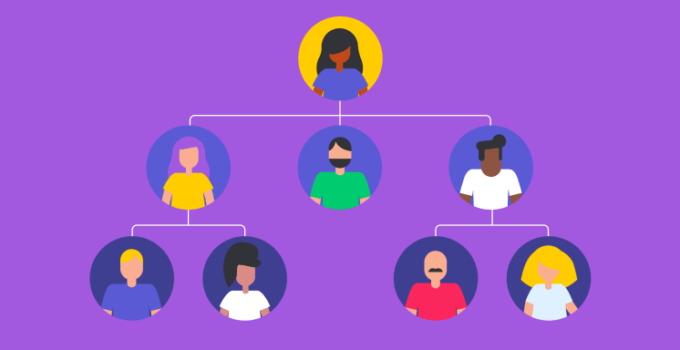Organizational charts are a great way for companies to tell people how they fit in the business, where they stand within the hierarchy of the company, and what their individual responsibilities are.
A company’s organizational chart is one of its most potent weapons. Big or small, creating one is crucial for success.
Here are the biggest reasons why you should think about making one:
#1. An Org Chart Keeps Things Organized
According to Mena Thomas, President at Focal Point Business Coaching, an organizational chart can help a business stay organized by clarifying who reports to whom. If you have a new hire that is confused about where he or she fits in compared with existing employees, draw up an org chart so everyone knows who’s who and who does what. Clarify Roles When your company grows and more people get added on, it becomes increasingly challenging for employees to know what others do. When a company is spread out geographically, it becomes even harder for people to understand their responsibilities and how they fit into the big picture. Having a visual map of who does what can help employees at all levels know where they stand, as well as encourage them to see how their work serves the company’s goals.
#2. An Organizational Structure Establishes Company Culture

Source: bsmgroupinc.com
Oftentimes, companies share values but aren’t sure how those values will be implemented or communicated throughout the organization. Organizational charts provide an easy way for you to show employees where your culture comes from and what future success looks like within your business.
For example, if you’re a young entrepreneur with multiple businesses under your belt, you’re going to have very different cultures in each of them. You might have a very flat organizational chart in your first company where everyone has an equal say, but a more traditional hierarchical structure in your second company. Use your organizational chart to show employees the kind of culture you want and the values that are important to you.
#3. Facilitate Communication
When employees know who their supervisor is, they’re more likely to go to them with questions or problems they’re having at work. According to research done by Gallup, businesses with engaged employees have 43% lower staff turnover rates. The easier it is for employees to communicate with their supervisors, the more likely they are to be engaged in their work.
An organizational chart can also help improve communication between teams within a company. When everyone knows what other teams are working on, who their supervisor is, and how they fit in with the organization’s goals, it can be easier to share information or brainstorm ideas.
#4. A Company Organizational Chart Drives the Productivity of Employees

Source: advancesystems.ie
When people know exactly what they’re supposed to do each day based on their position within your company, they’re more likely to feel like they’re achieving something. As an employer, you should make it clear how an employee fits into your company vision and where he or she stands among other employees. This will not only make employees feel like they have a purpose but also encourage them to work harder because there’s no ambiguity about what needs to get done.
#5. A Business Organizational Chart Gives Employees Feedback Easily
When it comes to giving feedback, most people think of formal reviews that happen once or twice a year. But what about the everyday feedback you should be giving your employees? According to research done by The Ken Blanchard Companies, almost 60% of employees would like more frequent feedback.
Since it can be difficult to constantly meet with every employee one-on-one, an organizational chart can help supervisors give feedback easily and efficiently. Supervisors can simply point out areas on an employee’s chart where he or she could use some improvement. This way, employees are constantly getting feedback in a way that is easy to understand and doesn’t take up too much time.
#6. Encourage Employee Development

Source: insperity.com
One of the best things about an organizational chart is that it can be updated as your business changes. As employees move up within the company or take on new responsibilities, their position on the chart can be adjusted. This way, everyone knows who the next person is in line for a promotion and what skills they need to develop in order to get there.
An organizational chart can also help you track employee development over time. By looking at how an employee’s role has changed since he or she joined the company, you can see which skills they’ve acquired and which ones they still need to work on.
#7. A Corporate Structure Chart Identifies Gaps in Skills
One of the biggest benefits of having an organizational chart is that it can help you identify gaps in skills. For example, if you have a position on your chart that is currently vacant, it’s a sign that you need someone with that specific skill set.
An organizational chart can also help you identify skills that are in high demand within your company. If most of your employees are experts in social media marketing but you’re having trouble finding someone to do SEO, it might be time to invest in some training for your team.
Sounds important right? Why don’t you make it easier and just click to go to Venngage and easily make charts and top it off with an amazing business proposal!
Conclusion

Source: forbes.com
Organizational charts can help businesses in a variety of ways. They can be used to track and monitor employees, plan for the future growth of an organization, increase employee morale by promoting transparency, and improve productivity through better communication among team members. Which benefits have you seen from using organizational charts?




